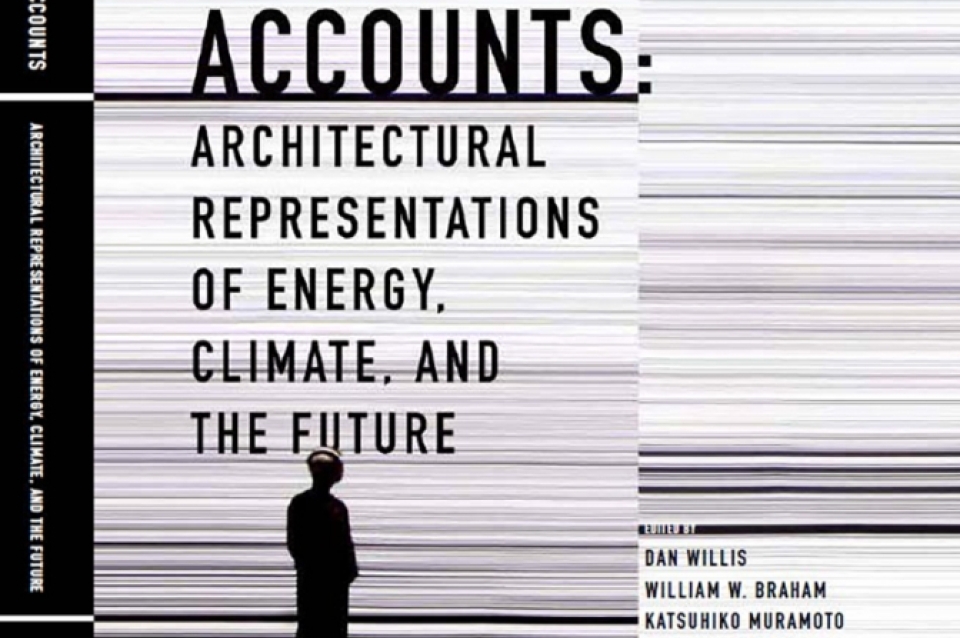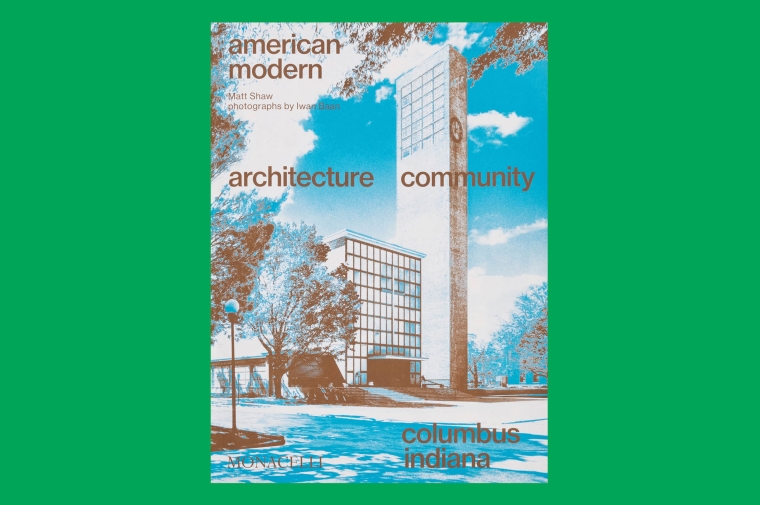November 4, 2016
Stuart Weitzman School of Design
102 Meyerson Hall
210 South 34th Street
Philadelphia, PA 19104
Get the latest Weitzman news in your Inbox
How does one tell the story of energy production, use, or conservation in a manner sufficiently convincing to influence policy, behavior, and design? Co-edited by William Braham, Professor of Architecture, Daniel Barber, Assistant Professor of Architecture, and faculty at Pennsylvania State University, Energy Accounts (Routledge, 2016) explores possible answers to this question through images, data visualizations, narratives, and other examples of accounting for energy. Among the firms represented are Kieran Timberlake, SHoP, AMO, Lateral Office, and WOHA.
Energy provides a seemingly universal measure for vastly different kinds of capabilities, from the heating of buildings and the rusting of metals to the formation of stars, but ultimately it requires plans, images, narratives, or other kinds of accounts to make it intelligible for policy and design. Energy accounts take many forms, from depictions of data to images of more efficient cars, buildings, or cities. Our use of the word “account” and its variations is intended to convey two meanings simultaneously: the explicit tallying up of energy inputs and the stories that are told about the uses to which energy is being put.
Architectural, urban, and infrastructural plans for energy are based on scenarios developed by economists, demographers, and policy analysts, but also shape those scenarios, and together they rest on deeper narratives about risk, growth, and the common good. Data visualization has developed increasingly complex relationships to strategies for transforming patterns of energy use, as narratives and depictions of the future have become enmeshed in cultural and political debates. Designers have embraced this new role as interpreters of complex data—OMA/AMO’s recent project on Eneropa, for example, seeks to envision a Europe reorganized according to the regional availability of tidal, solar, and geothermal energy (OMA 2016). Digital simulations of building energy performance are used to predict typical or probable futures and have become ubiquitous in design journals and architecture school juries.
Performance projections, flow diagrams, pseudo-color renderings, and other representations of energy only make sense in the context of underlying assumptions or arguments about resource consumption. Narratives produced by journalists and policy advisors help catalyze discussions, but central to all these accounts are the terms by which the future is read through apocalyptic, utopian, or business-as-usual futures. By making the concerns of economists, energy forecasters, physicists, and others more legible, the design fields have entered into a broad set of questions about culture, communication, and the policy barriers to an effective debate about energy.
The work assembled in this book emerged from a series of public events held over three years at the University of Pennsylvania, which brought together architects, engineers, scientists, economists, and other scholars and professionals to foster an interdisciplinary dialogue about architecture and energy. The immediate inspiration for this publication was a question asked within the newly formed Energy Efficient Buildings HUB (since renamed the Consortium for Building Energy Innovation), funded by the United States Department of Energy (DOE) to advance the commercialization of energy efficiency methods. They asked, whether an energy-efficient building should “look different?” It is a variation of the question about the proper style of a sustainable, green, or environmental building, which is frequently posed by journalists and lay people alike. It is a question mostly ignored by practicing designers, for whom style has become a term of superficial description, largely disconnected from the actual work of design. And yet the question persists.
With design for the built environment, sometimes it is not a graphic or representational strategy so much as an entirely new way of conceptualizing a situation that reveals a potential solution. The power of OMA’s Eneropa project derives from the simple strategy of looking at the European continent as a whole. OMA determined that “the most efficient energy resources are geographically dependent,” and also that complementary energy generation strategies that would exploit the unique geography and climate of the northern and southernmost regions of the continent were feasible (Baird 2014). Therefore our book contributors include authors who are neither scientists nor designers, but whose works broaden the conversation beyond the “how to” aspects of visualization to address the ways in which works of art, architecture, or fiction may impact our understanding of energy and climate.


 Expand Image
Expand Image



